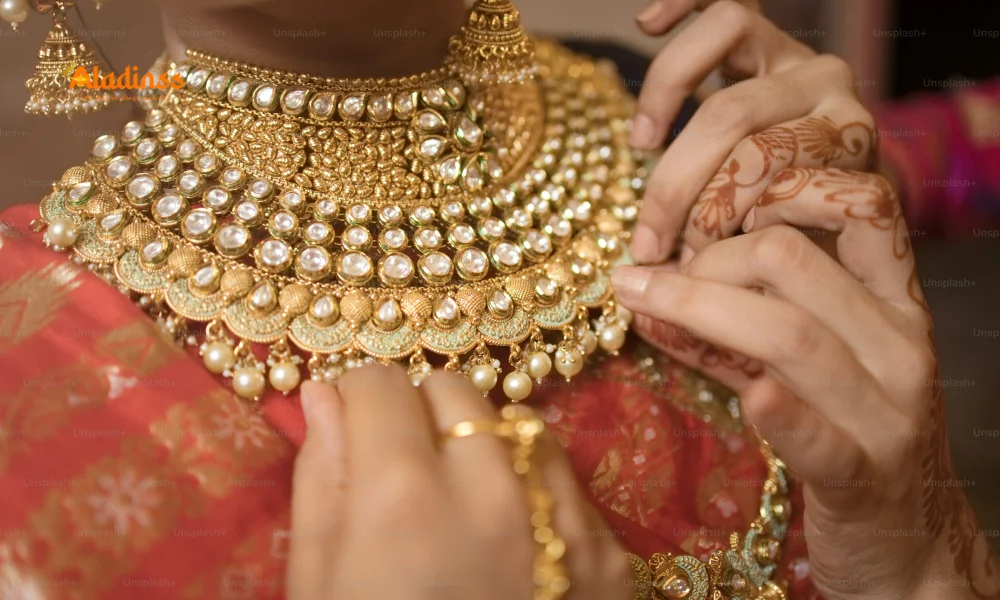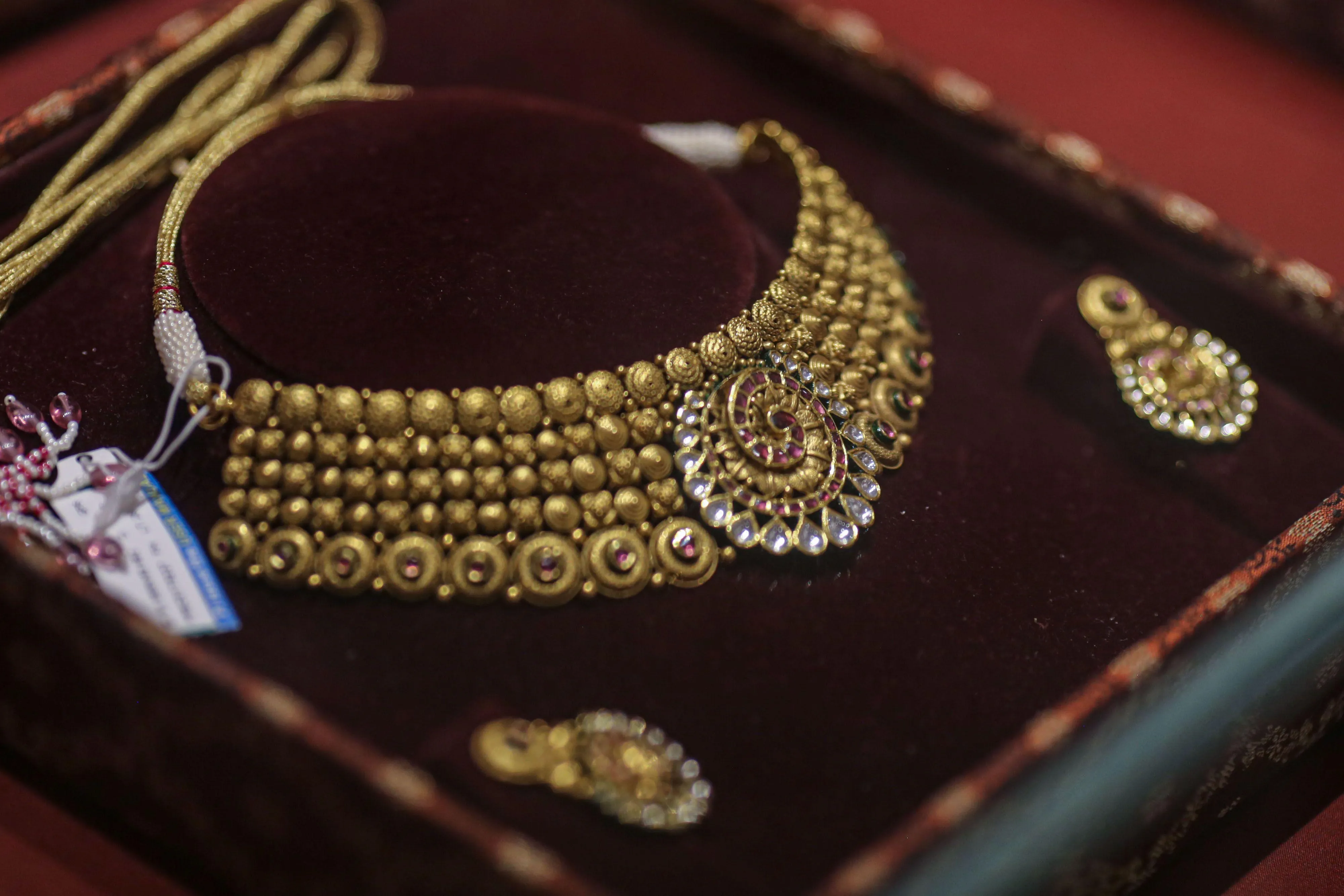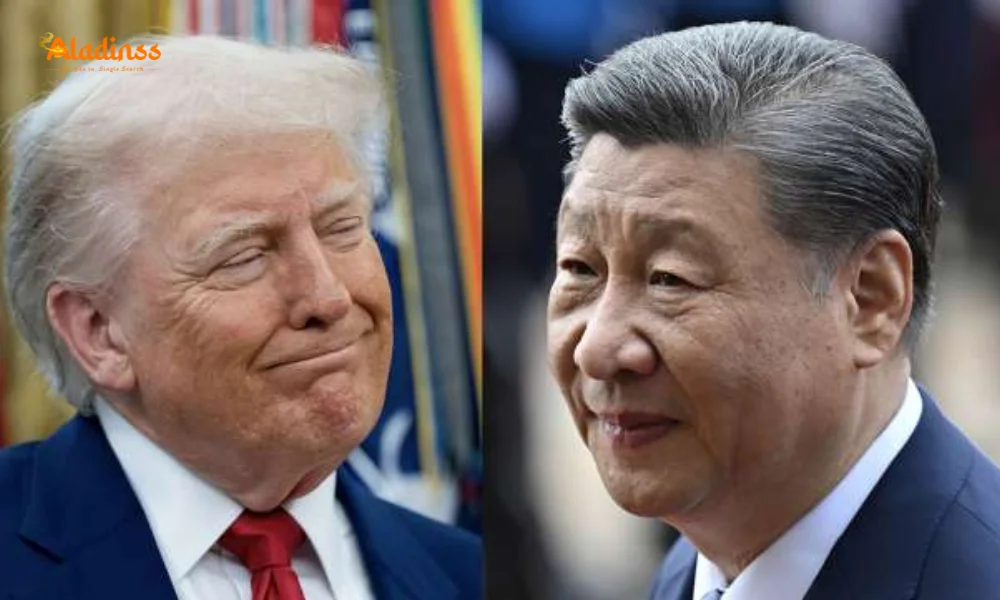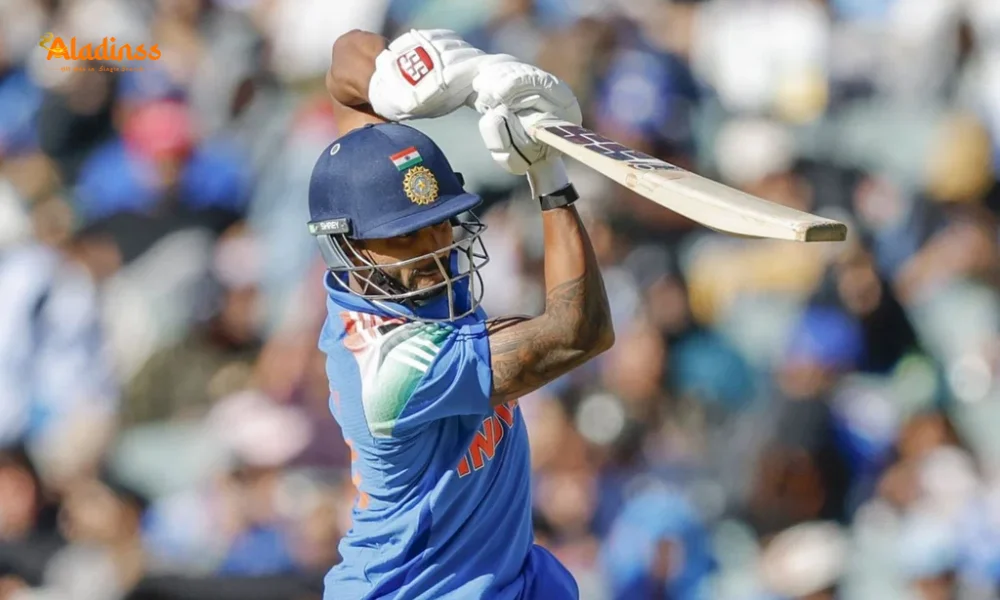Gold Prices Soar to New Highs in India Amid Global Tensions

Gold Prices Soar to New Highs in India Amid Global Tensions
Gold prices in India have reached unprecedented levels, crossing the Rs. 10,000 per gram mark, as global and domestic economic uncertainties continue to drive demand for the precious metal. On September 9, 2025, the price of 22-karat gold surged by Rs. 90 per gram, reaching Rs. 10,150 per gram, while the price per sovereign rose by Rs. 720 to Rs. 81,200. Similarly, 18-karat gold saw a notable increase, climbing by Rs. 75 per gram to Rs. 8,405, with a sovereign priced at Rs. 67,240. Meanwhile, silver prices remained stable at Rs. 140 per gram and Rs. 1,40,000 per kilogram.

Factors Driving the Gold Price Surge
The sharp rise in gold prices is attributed to a combination of global and domestic factors. The ongoing conflicts, including the Russia-Ukraine war and the Israel-Hamas tensions, have contributed to a global economic slowdown, prompting investors to turn to gold as a safe-haven asset. Additionally, the imposition of a 50% US tariff has created an unstable environment in the Indian economy, further fueling demand for gold as a reliable investment option. Over the past decade, gold prices have skyrocketed by approximately 1,200%, reflecting its growing appeal amid economic uncertainties.
Gold holds a special place in Indian culture, not only as jewelry and a symbol of luxury but also as a cornerstone of financial security. For many households, gold is the first step in savings, making the recent price hikes a significant concern for consumers. The continuous upward trend in prices has left jewelry lovers and investors alike grappling with the rising costs, particularly as the festive and wedding seasons approach.
Recent Trends in Gold Prices
The gold market has been highly volatile in recent weeks. On September 1, 2025, prices began the month with a sharp increase, setting the tone for a series of daily hikes. By September 8, gold prices crossed the Rs. 10,000 per gram threshold for 22-karat gold, marking an all-time high. That day alone saw two price changes: a relatively lower price in the morning followed by a sharp increase in the afternoon. The price of 22-karat gold rose by Rs. 90 per gram to Rs. 10,060, and the price per sovereign increased by Rs. 720 to Rs. 80,480.
Today, September 9, 2025, the upward trend continued with another significant hike. The price of 22-karat gold increased by Rs. 90 per gram, reaching Rs. 10,150, while a sovereign now costs Rs. 81,200. For 18-karat gold, the price per gram rose by Rs. 75 to Rs. 8,405, and a sovereign increased by Rs. 600 to Rs. 67,240. Silver, on the other hand, has shown no change, maintaining its price at Rs. 140 per gram and Rs. 1,40,000 per kilogram.
Impact on Indian Consumers
The continuous rise in gold prices has sparked widespread concern among Indian consumers, particularly those who view gold as a long-term investment and cultural necessity. Weddings, festivals, and religious ceremonies in India often involve significant purchases of gold jewelry, and the current price surge is likely to strain budgets. For many middle-class families, gold is not just a luxury but a critical component of their financial planning, often used as collateral for loans or as a hedge against inflation.
The price hike has also affected the jewelry industry, with retailers reporting a slowdown in sales as consumers hesitate to make purchases at these elevated prices. Jewelers are now faced with the challenge of balancing inventory costs with declining demand, particularly for high-value items like wedding jewelry. Some experts predict that if the trend continues, consumers may shift toward lighter designs or alternative materials, such as silver or lab-grown diamonds, to manage costs.
Global Economic Context
The global economic landscape plays a significant role in the current gold price surge. The Russia-Ukraine conflict, now in its fourth year, has disrupted global supply chains and energy markets, contributing to economic instability. Similarly, the Israel-Hamas conflict has heightened geopolitical tensions, prompting investors worldwide to seek refuge in gold. These factors have driven up demand for the precious metal, as it is widely regarded as a stable store of value during times of crisis.
In addition to global conflicts, the 50% US tariff has had a ripple effect on the Indian economy. The tariff, aimed at protecting US industries, has increased the cost of imports and disrupted trade dynamics, leading to inflationary pressures in India. As a result, investors are increasingly turning to gold to safeguard their wealth, further driving up prices.
Future Outlook for Gold Prices
Analysts remain divided on the future trajectory of gold prices. Some experts believe that prices may stabilize if global tensions ease or if central banks implement measures to curb inflation. However, others warn that ongoing geopolitical uncertainties and economic challenges could push prices even higher in the coming months. The festive season in India, particularly Diwali and the wedding season, typically sees a spike in gold demand, which could further exacerbate price increases.
For investors, the current market presents both opportunities and challenges. While gold remains a safe bet during turbulent times, the high entry cost may deter new investors. Financial advisors recommend diversifying portfolios to mitigate risks, with gold forming a part of a balanced investment strategy rather than the sole focus.
Silver Market Stability
Unlike gold, silver prices have remained unchanged, offering some relief to consumers looking for more affordable alternatives. At Rs. 140 per gram and Rs. 1,40,000 per kilogram, silver continues to be a viable option for those seeking to invest in precious metals without the steep costs associated with gold. However, experts note that silver prices could also rise if industrial demand increases, given its use in electronics and renewable energy technologies.
The stability in silver prices provides a silver lining for consumers, particularly those planning purchases for festivals or gifting purposes. Retailers are optimistic that silver jewelry and coins will see strong demand in the coming months, especially as gold becomes less accessible for budget-conscious buyers.
Navigating the Gold Market
For consumers and investors navigating the current gold market, careful planning is essential. Those looking to purchase gold for personal use or investment should monitor price trends closely and consider buying during price dips, if possible. Additionally, exploring options like gold exchange-traded funds (ETFs) or sovereign gold bonds may provide a more cost-effective way to invest in gold without the physical storage challenges.
As the gold market continues to evolve, staying informed about global and domestic economic developments will be crucial for making sound financial decisions. With prices at an all-time high, the allure of gold remains strong, but its affordability is increasingly out of reach for many.
Comment / Reply From
No comments yet. Be the first to comment!











